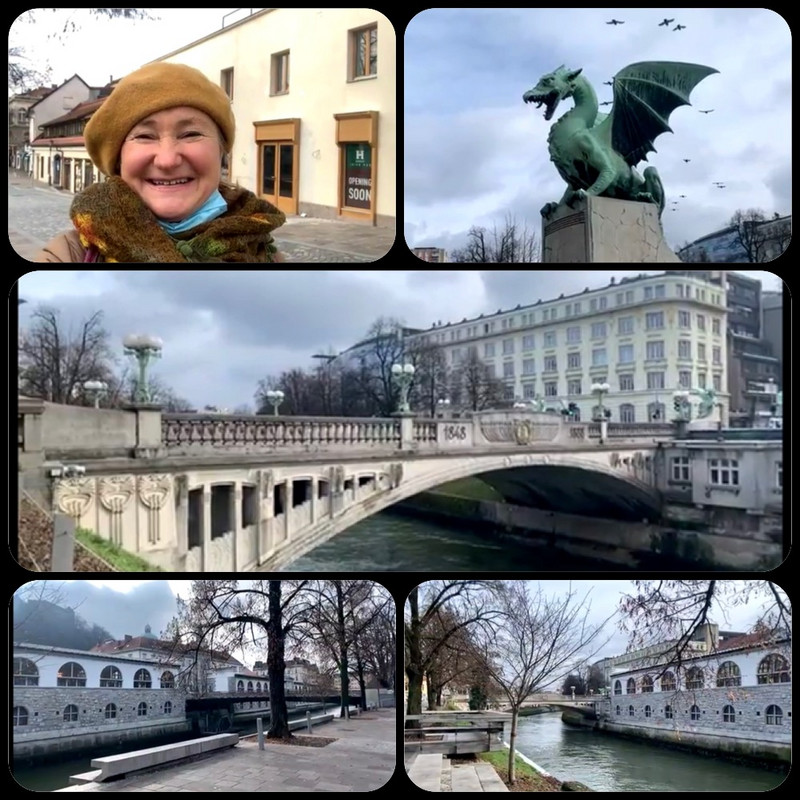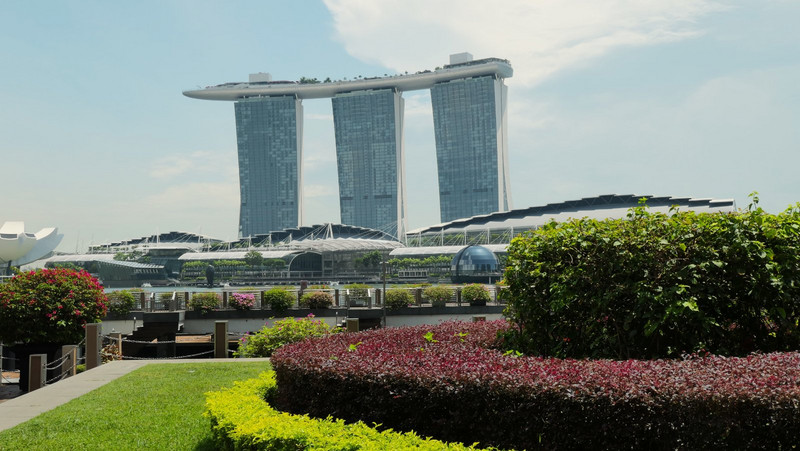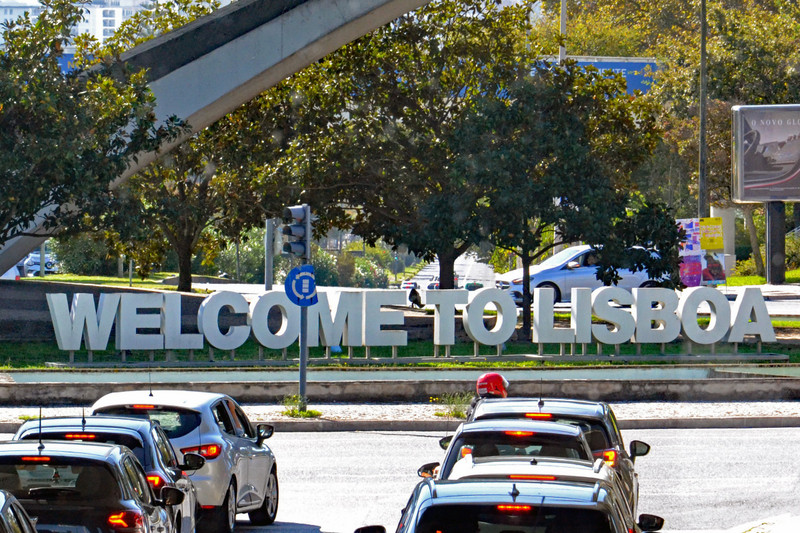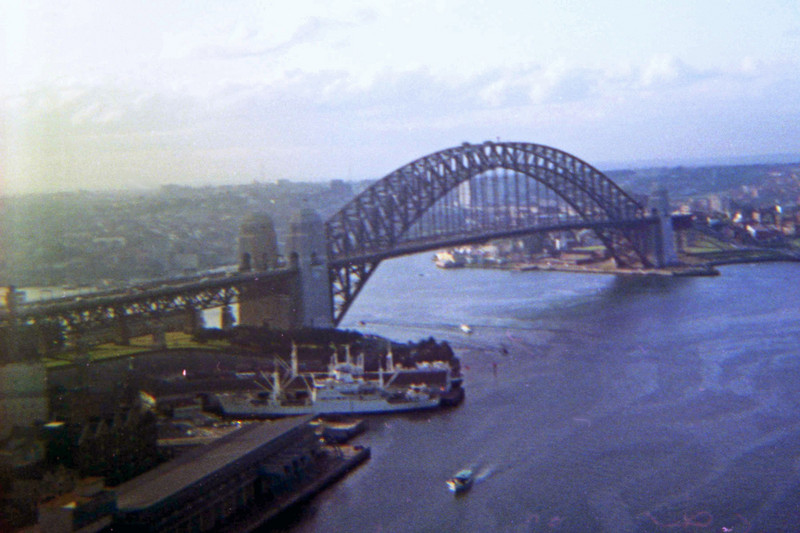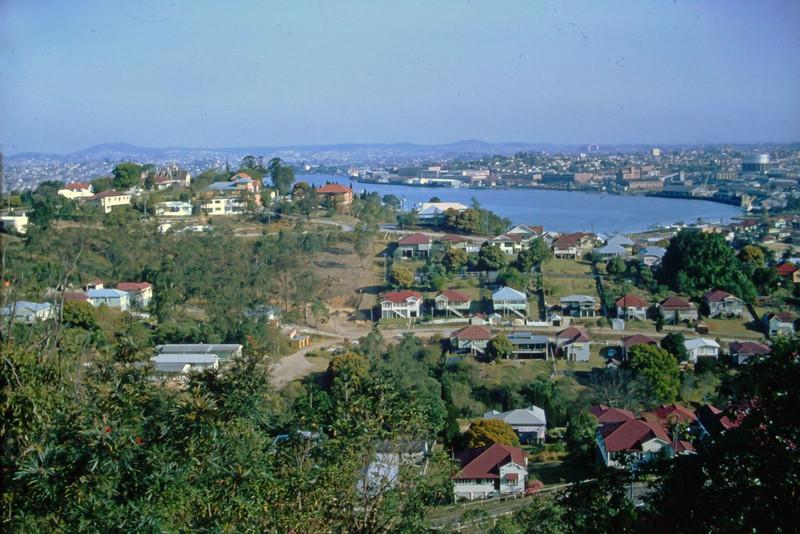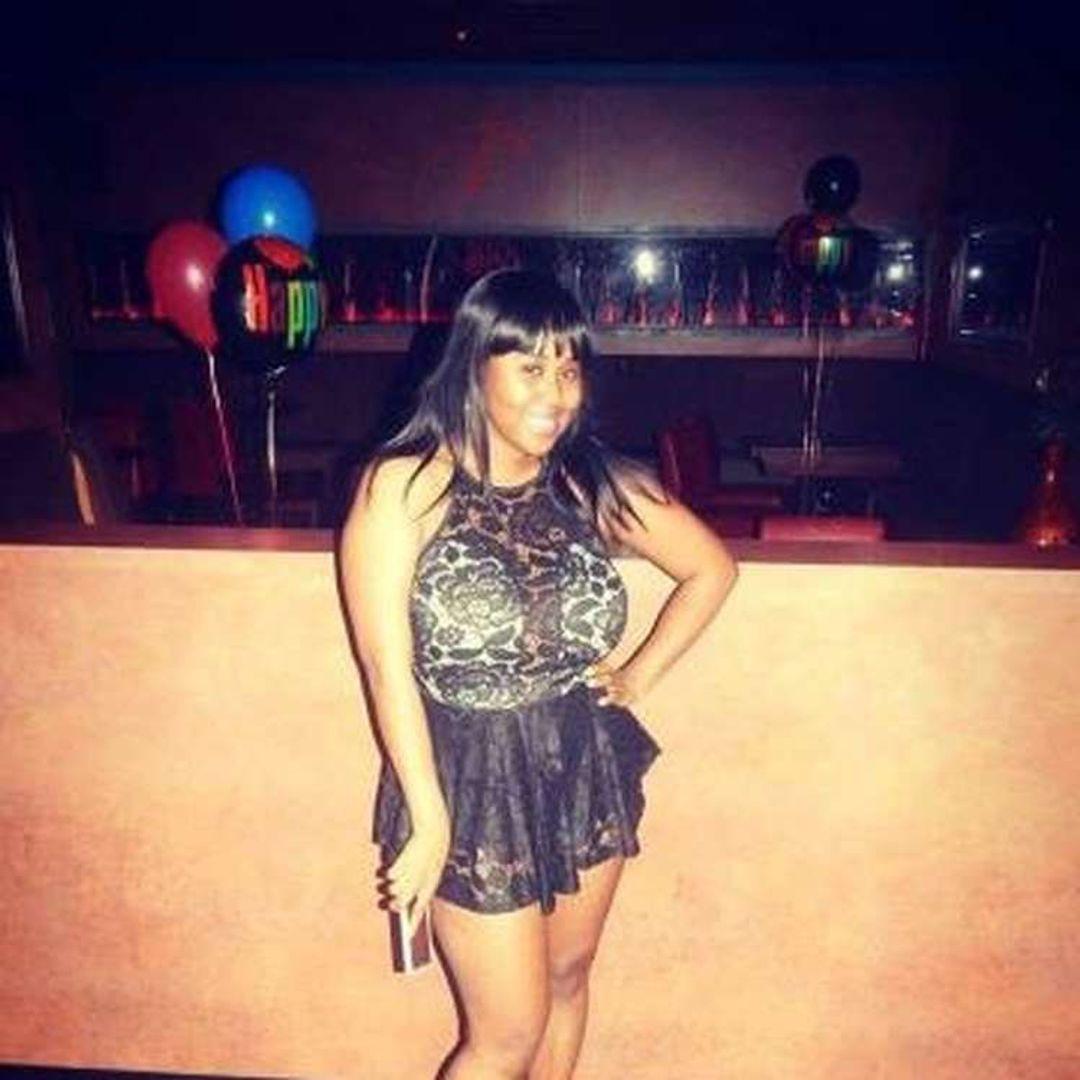Ljubljana, the capital of Slovenia was the location for todays virtual trip with Mateja (The female version of Matthew).
David & I had visits Ljubljana a couple of years ago so I was looking forward to revisiting the area around the three bridges and the old town.
We started at the Dragon Bridge a unique creation considered to be an extraordinary piece of technical heritage and example of Art Nouveau architecture, which flourished at the turn of the 20th century. Constructed between 1900 and 1901, it was Ljubljanas first reinforced concrete structure and one of the largest bridges of its kind to be built in Europe.
At the time of its opening, it was supposed to be adorned with winged lions instead of dragons. The bridges original decorations also include the parapet lamps, once powered by gas.
Above I could see the castle, that brought back memories of when we visited before, we took the funicular up and it was over 30 degrees with very little shade but the views were quite splendid.
Back to Mateja, such an interesting guide explaining the history, the language, the culture of Ljubljana.
These virtual trips although free are tip supported, today Mateja & virtualtrips team are donating ALL of the money received to support those who suffered during the Croatian earthquake last year.
Next we crossed The Butchers Bridge or as some call it The Love Bridge. It is a place where lovers have symbolically padlocked their love and dropped the keys into the river Ljubljanica beneath.
The Butchers Bridge, built in 2010, connects the Central Markets colonnade, considering it is called The Love Bridge the sculptures on the bridge are a bit creepy. Adam and Eve shamed and banished from Paradise; Prometheus running (disemboweled) in punishment for having given men the knowledge of fire; and a variety of frogs and skulls.
We entered a pretty courtyard with a nativity scene still on display. The shell motif on the outer door was a sign that you could enter without charge and enjoy the quiet atmosphere inside.
of two bronze doors added for a visit by Pope John Paul II in 1996. The main door celebrates the 1250th anniversary of Christianity in the Slovenia. The side door, the one that we saw, is decorated with the six bishops of Ljubljana in the 20th century.
The central of the three bridges has stood since 1842, when it replaced an old medieval wooden bridge connecting the European lands with Europe and the Balkans.
Between 1929 and 1932, the side bridges, intended for pedestrians, were added to the original stone bridge to a design by the architect Joe Plečnik.
Plečnik removed the metal railings from the old stone bridge and furnished all the three bridges with stone balustrades and lamps.
I remembered from our visit taking one of the stairways down the side of the bridge that led to the terraces just above the river.
